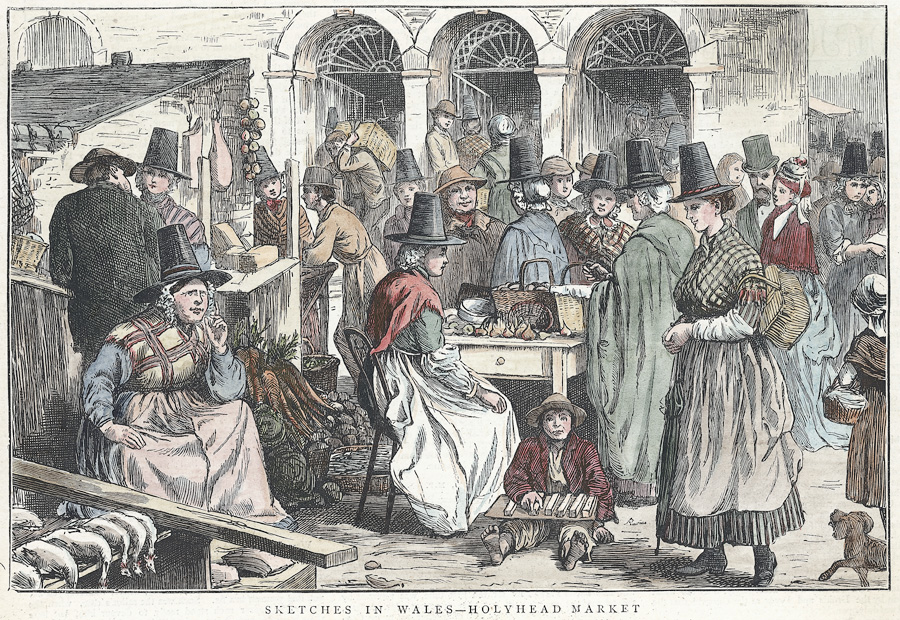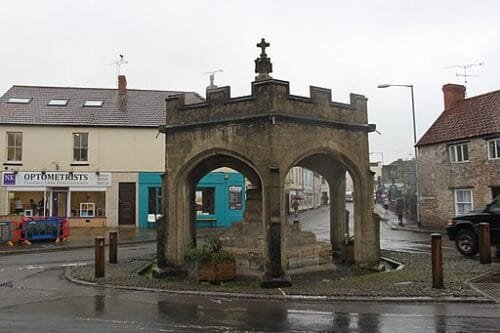What was a market town?

This morning I sat down and wrote out my grocery list, and made a couple of notes of which stores I would need to visit to acquire what the coming week would require. What would that chore have looked like in the Regency Era?
I’m glad you asked!
While shops and shopkeepers have always been a feature of local towns, in Jane Austen’s day, much of the commerce would have taken place at the local market, held only in properly chartered market towns.
What was a market town?
A market town was a settlement that obtained, by custom or royal charter, a market right, which allowed it to host a regular market. Market rights were legal a legal term that originated during the medieval era.
These towns had a special status, but were not necessarily cities, or even self-governing. Typically located at centers of local activity, where transport was easiest such as at crossroads or river fords, these towns only held markets on specific days. The rest of the week, they were essentially indistinguishable from other towns with the same shops and professionals one would find in other places. Historical studies suggest at least 2,400 market towns were chartered in England by 1516. Many place names evolved that ncludied Market (Market Drayton, Market Harborough, Market Rasen, Market Deeping, Market Weighton) or Chipping (Chipping Norton, Chipping Ongar, Chipping Sodbury)—from the Saxon verb ‘to buy’—that reflected their identity as a market town.
New market towns could not be established within a days travel (to and from) another market town, a distance of about 10 km or 6.2 miles. Charters also specified on which days a market could be held and nearby rival markets could not be open on those same days. As the number of market charters increased, competition between market towns increased. Market towns began intentionally developing infrastructure, like accommodations for travelers, to improve their reputation among shoppers. Specialty market halls were built to house market stalls for goods like textiles. Some market towns became known for particular products like wool, yarn or cheese. Consumers carefully chose the markets they would attend based on the goods and ammenities offered. (The more things change, the more they stay the same, right?)
Market Crosses

Lacking billboards and other modern signage to direct shoppers to the market, many market towns erected market crosses (also known as butter crosses) in the center of the designated market area.
Several theories attempt to explain the specific use of a cross to designate the market space. Some suggest the cross was a means to curry God’s favor on the proceedings. Others suggested it reminded both vendor and buyer to deal fairly with one another. Another theory posits that the market cross was a remnant of the original, informal markets held in church yards.
Somehow it is not surprising that market crosses could be quite elaborate, with tall pillars, pavilions, and even clocks.
What was a market like?

As market towns grew and developed, some constructed their roads with the market in mind. In some cases, that meant a wide main street or central market square. These provided room for people to set up stalls and booths on market days. But specialized markets might mean a very different design. Narrow side streets in Stow on the Wold in Gloucester were laid out to ease managing herds of sheep.
Covered trading areas or market halls sprang up to house local markets, keeping goods and shoppers out of the weather. These halls also often provided administrative and other office space on the floors above the trading space.
“As leisure travel increased in the Georgian era, some market towns, such as Norwich, became fashionable shopping destinations. Permanent stores grew up around the market places, but transitional and temporary stalls were still used for the weekly market.” (Hunter, 2022)
Markets and Festivals
The mix of markets and seasonal celebration days naturally led to fairs and festivals. Markets might spill out into surrounding areas outside of town, with vendors selling food ready to eat on site. Sports and other games often made their way into the festivities, and the quintessential county dance might also delight locals and visiting vendors and shoppers alike.
References
DeSantis, Marc. Rural England in the Age of Jane Austen. Jane Austen Center. Accessed July 29, 2022. https://janeausten.co.uk/blogs/regency-history/rural-england-in-the-age-of-jane-austen
Hunter, Kristi Ann. Market Towns: The Mall of the Regency. Vanessa Riley’s Regency Reflections. March 10, 2022. Accessed July 29, 2022 https://vanessariley.com/blog/2022/03/10/market-towns-the-mall-of-the-regency/

Interesting information! The five boroughs of New York and their fruit and vegetables stands are just as busy on a daily basis. Then you have “marketing” days during the week and weekends!
My husband grew up in the market town of Beverley, in East Yorkshire. They have a Wednesday Market and a Saturday Market that date back many centuries, and there’s a Market Cross at the Saturday Market. I love visiting there!
Every Saturday, during the summer months until noon, vendors, selling produce and wares, assemble on our courthouse lawn, which is our town square. It is called a square as it is bracketed by four streets.
I noticed in the first picture a certain type of hat worn by the women. Vendors wore them and it looked like servants doing the shopping wore them. The lady with the gentleman was dressed more elegantly. I’m wondering if the merchants and lower classes wore that type of hat. Just a thought. Thanks for sharing this information with us.
I did not know that Chipping indicated a market!!
Now “Market Chipping” in Howl’s Moving Castle makes so much sense! Of course Diana Wynne Jones, who named the hat makers “Hatters”, to name the market town “Market Market” LOL